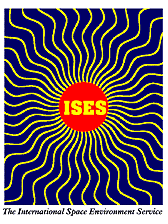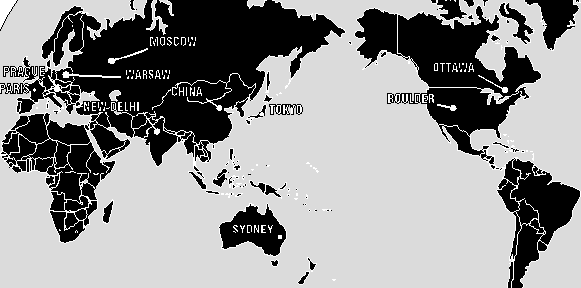The International Space Environment Service

The objectives of the International Space Environment Service (ISES) are to:
- provide real-time forecasting and monitoring of space weather to reduce and mitigate the risk of space weather impacts on technology, critical infrastructure and human activities.
- facilitate international communication and service coordination regarding space weather, particularly during periods of enhanced activity and in the event of extreme space weather.
- improve space weather services and promote the understanding of space weather and its effect for users, researchers, the media and the general public.
The world's real-time space weather services are provided by the 15 Regional Warning Centres (RWCs), four Associate Warning Centres and one Collaborative Expert Centre of ISES. The Australian Government's Bureau of Meteorology space weather agency operates a RWC in Sydney which monitors and predicts solar terrestrial activity and provides space weather forecasts and warnings for users who plan or conduct activities sensitive to solar terrestrial conditions.
The International Ursigram and World Days Service (IUWDS) was formed in 1962 through collaboration between the International World Days Service and the former URSI Central Committee of Ursigrams. The IUWDS changed its name to ISES in 1996. Throughout its existence ISES has had an important role in coordinating the exchange of data between organisations around the world who are involved in forecasting solar terrestrial conditions. These RWCs have the responsibility for collecting data from their geographical areas and exchanging these data through the ISES network. The data exchanged are highly varied in nature and in format, and include simple forecasts, coded information and images. An important strength of the data exchange system is that RWCs often have access to data from unique instrumentation available from the scientific community in its region. Exchange through ISES makes these data available to the wider international scientific and user community.
The present RWCs are located in Beijing (China), Boulder (USA), Brussels (Belgium), Hermanus (South Africa), Jeju (Republic of Korea), Lund (Sweden), Moscow (Russia), New Delhi (India), Ottawa (Canada), Prague (Czech Republic), Sao Jose dos Campos (Brazil), Sydney (Australia), Tokyo (Japan), Treffen (Austria) and Warsaw (Poland). A data exchange schedule operates with each centre providing and relaying data to the other centres. The centre in Boulder plays a special role as "World Warning Agency", acting as a hub for data exchange and forecasts.
The prime reason for the existence of the RWCs is to provide services to the scientific and user communities within their own regions. These services usually consist of forecasts or warnings of disturbances to the solar terrestrial environment. The range of the locations of RWCs results in a very large diversity in the users of these forecasts. An important feature of the ISES system is that RWCs are able to construct and direct their services to the specific needs of their own customers.
Users of the services of RWCs include: high frequency (HF) radio communicators; mineral surveyors using geophysical techniques; power line and pipeline authorities; operators of satellites and a host of government, commercial and scientific users. The increasing sophistication and sensitivity of modern technology has resulted in a steadily expanding range of applications where a knowledge of the solar terrestrial environment is important.
For more information and references to other ISES centres, see the ISES website.

Material prepared by Richard Thompson





